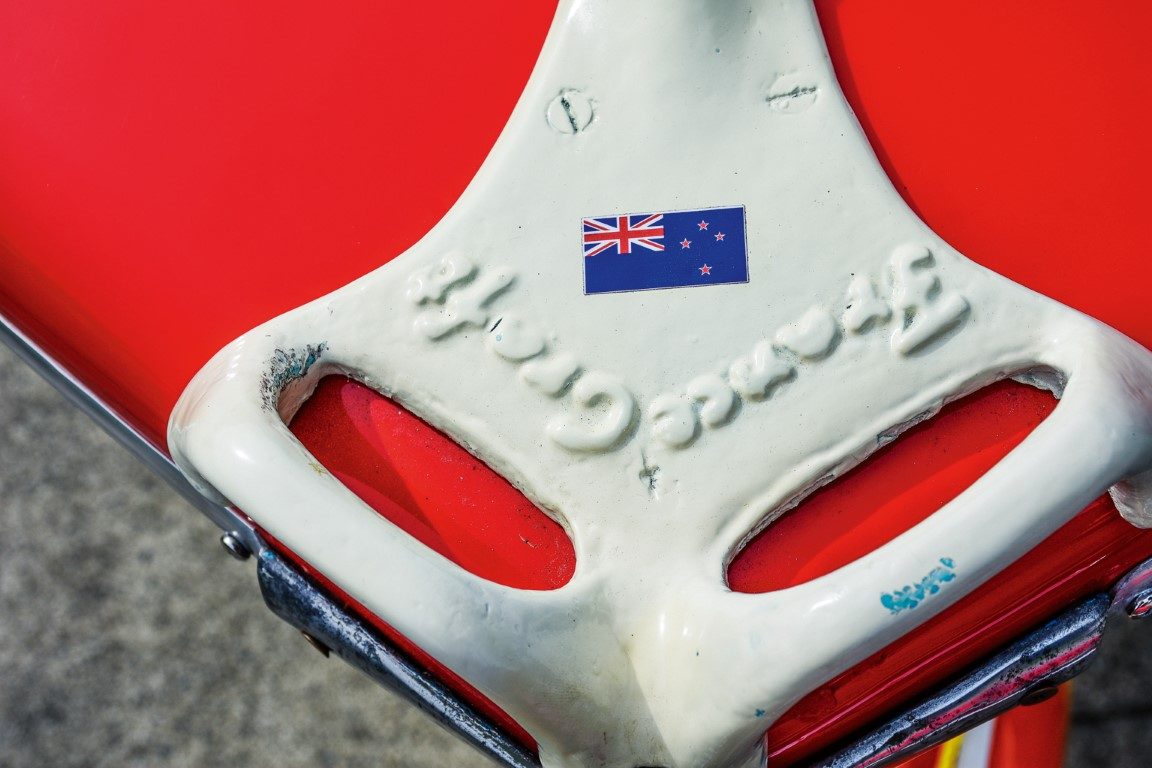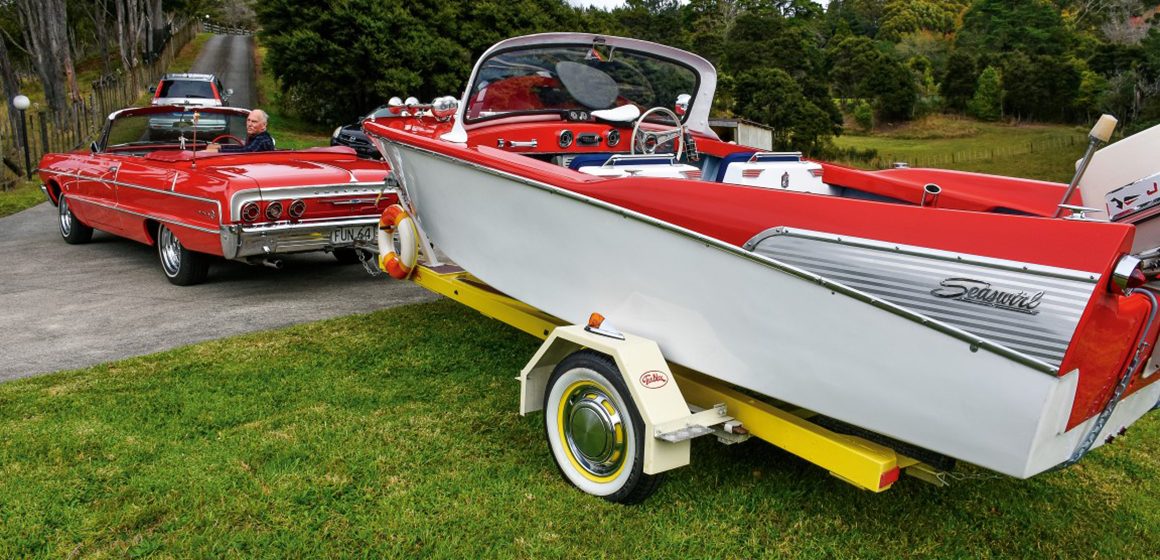

A blood-red, 1958 France Craft runabout being towed by a blood-red, 1964 Chev Impala convertible makes for an arresting sight. But these sultry ladies are only a small part of the vast, eclectic road/marine collection owned by Auckland’s Jeff Matthews.
Jeff is a seasoned collector of ‘retro’ – he’s been at it since he was 10 years old and he’s now 65. And as it became increasingly difficult to store and display the fruits of his passion around the home (his wife finally put her foot down), he opted for a purpose-built, five-bay garage. Far removed from the adjoining house…
The result is the most extraordinary collection of items (mainly from the 50s and 60s) I’ve seen in a long while – you could spend a week examining everything. Even more remarkably, Jeff keeps an accurate database in his head – he’s able to tell you the precise provenance of each piece – and there are thousands. Lesser mortals might have opted for a computer.
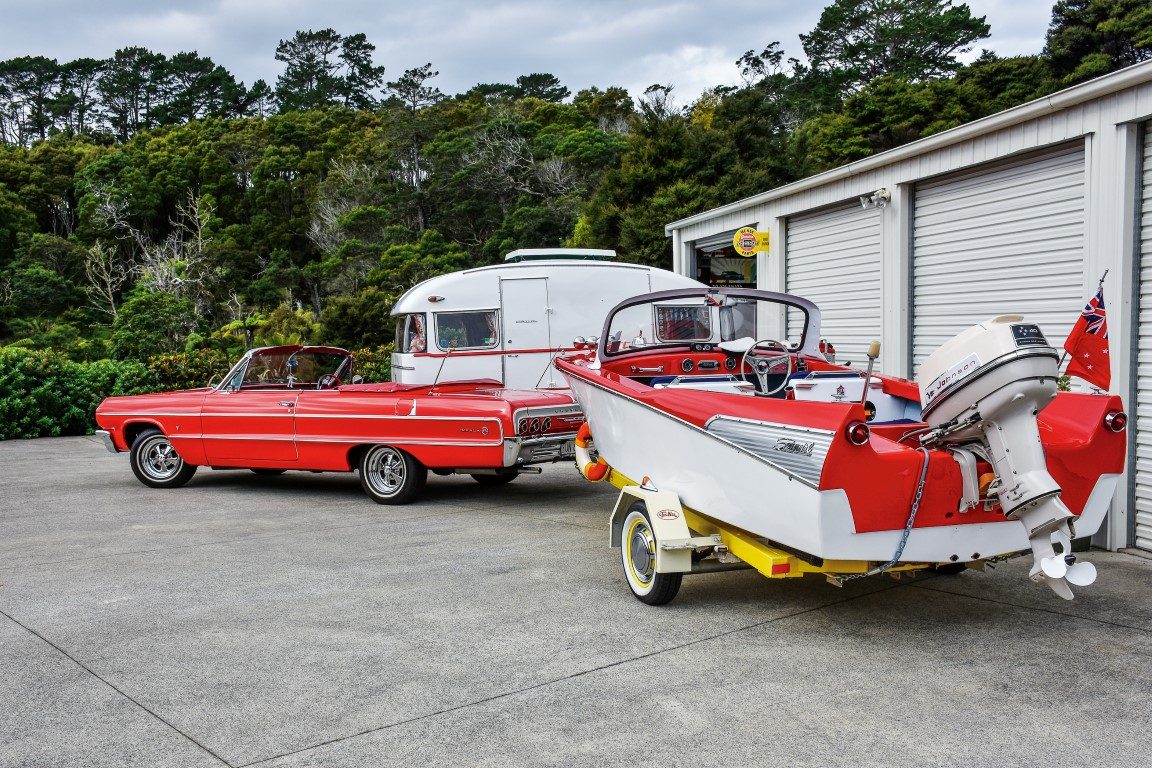
But let’s begin with the France Craft and the Impala.
Though he’s first and foremost a vintage car enthusiast, says Jeff, he has soft spot for anything with an interesting design. He particularly likes the 50 and 60s – which he considers the “golden age of design”. Especially the cars, boats and motorcycles – creations that embodied soul and character rather than pure, clinical functionality.
He acknowledges that this 15-foot boat’s background is sketchy and says any information about her remains elusive. All he knows is that she was built by Arnold France – based in Christchurch – and that France was one of New Zealand’s pioneer fibreglass boatbuilders.
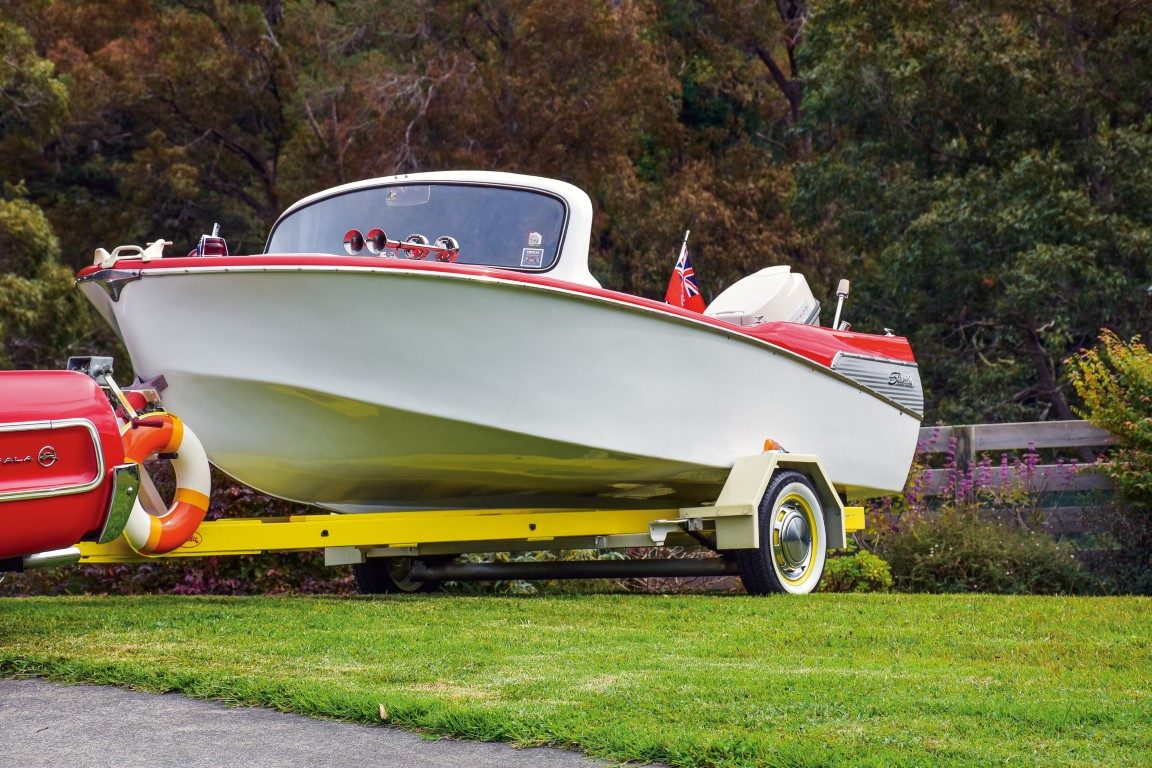
France began dabbling with fibreglass construction in 1955, producing a range of dinghies and runabouts. Research shows he also worked closely with Bill Hamilton, developing the latter’s iconic jet units. To the best of his knowledge, says Matthews, only a few France Craft boats exist today. “I’ve only ever seen one other, advertised a few years back on Trade Me – it belonged to Arnold’s grandson – but I’ve no idea what became of her.”
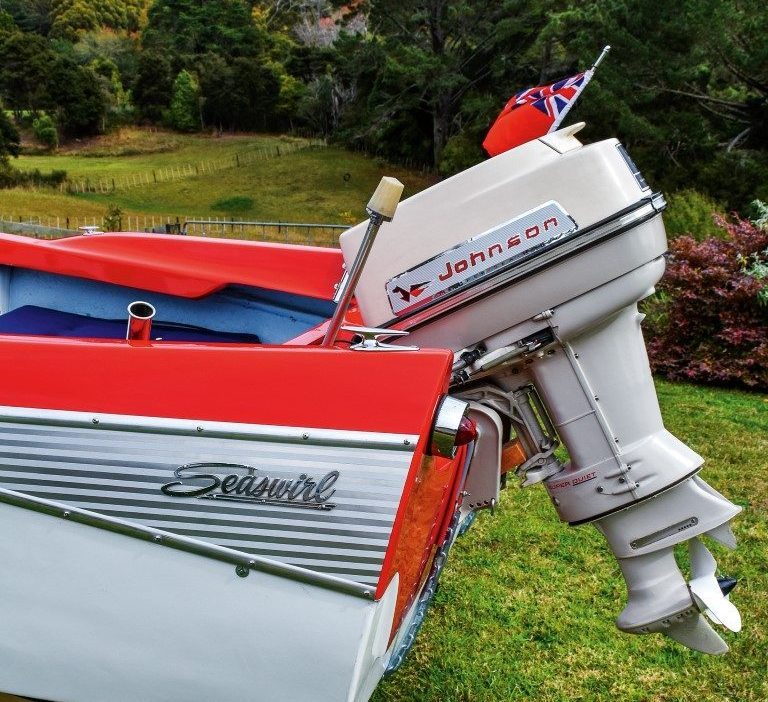
He found this one in Nelson about 12 years ago. What drew him to her was not so much her rarity but the design – specifically her very distinctive rear fins which echo the style of many cars from the same era. She was structurally sound but required quite a bit of restoration work. The hull was stripped back to the gelcoat before being resprayed. He believes she was originally a hard-top, though that structure has long since disappeared.
Today she’s embellished with plenty of chrome accessories (typical of boats in the USA from the same period). He was able to find some of the pieces from local stores specialising in gear from yesteryear, but most of it is ex-USA.
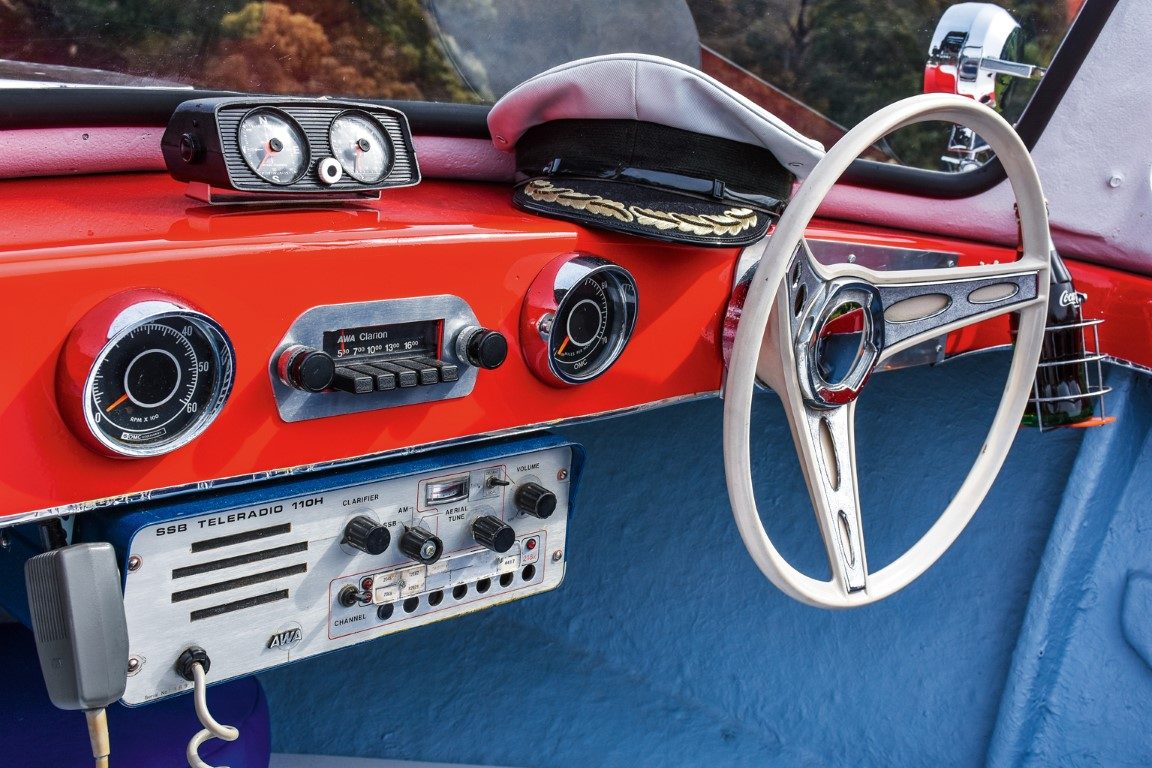
On her transom is a 1964 Johnson 40hp Super Sea-Horse (sourced locally), and though he has no ambitions to use the boat, he knows the engine is a runner. The boat’s ‘tail-lights’ are an unusual feature (for New Zealand) but even a brief exploration of US runabouts from the period reveals that boat tail-lights were common. Perhaps an early forerunner of today’s underwater LEDs?
The France Craft rides on a timber and steel trailer. Though it’s a local build, Jeff has added the Tee Nee name to the trailer (a popular US boat trailer manufacturer of the period) and painted it with the company’s signature yellow livery.
The Impala
Jeff exhibited the France Craft at the recent Hutchwilco Boat Show in Auckland (first time for her at a boat show) but over the years has displayed her at various auto shows. The task of getting her around the country has fallen to the matching Chevrolet convertible.
He’s owned her for about 30 years and, unlike the France Craft, he has a full history of the vehicle. She was imported into New Zealand for the 1964 Wellington Auto Show – one of only a handful of right-hand-drive Impala convertibles ever produced.
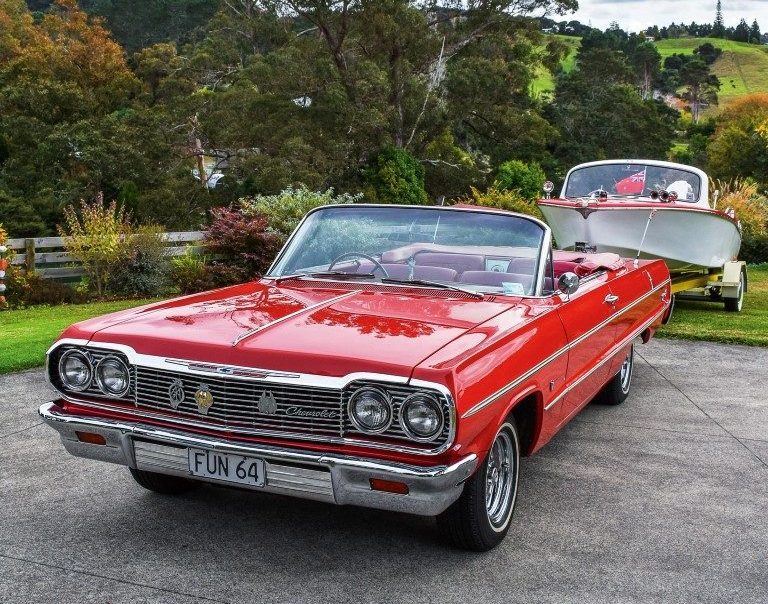
Though the car was mechanically sound when he acquired her (the throaty V8 is the original engine and sounds very healthy), the bodywork needed quite a bit of work and rust-removal. The repaired car is immaculate in her vibrant red and bright chrome – and when the France Craft was repaired opting to paint her a matching red was an easy decision. Together, car and boat look like first cousins.
Another component of the Impala/France Craft marriage is an early-60s New Zealand-built Caravelle caravan – an item Jeff says was appealing for its design features. Unlike the France Craft, the Caravelle is fully functional and roadworthy (he and his wife have used it for camping).
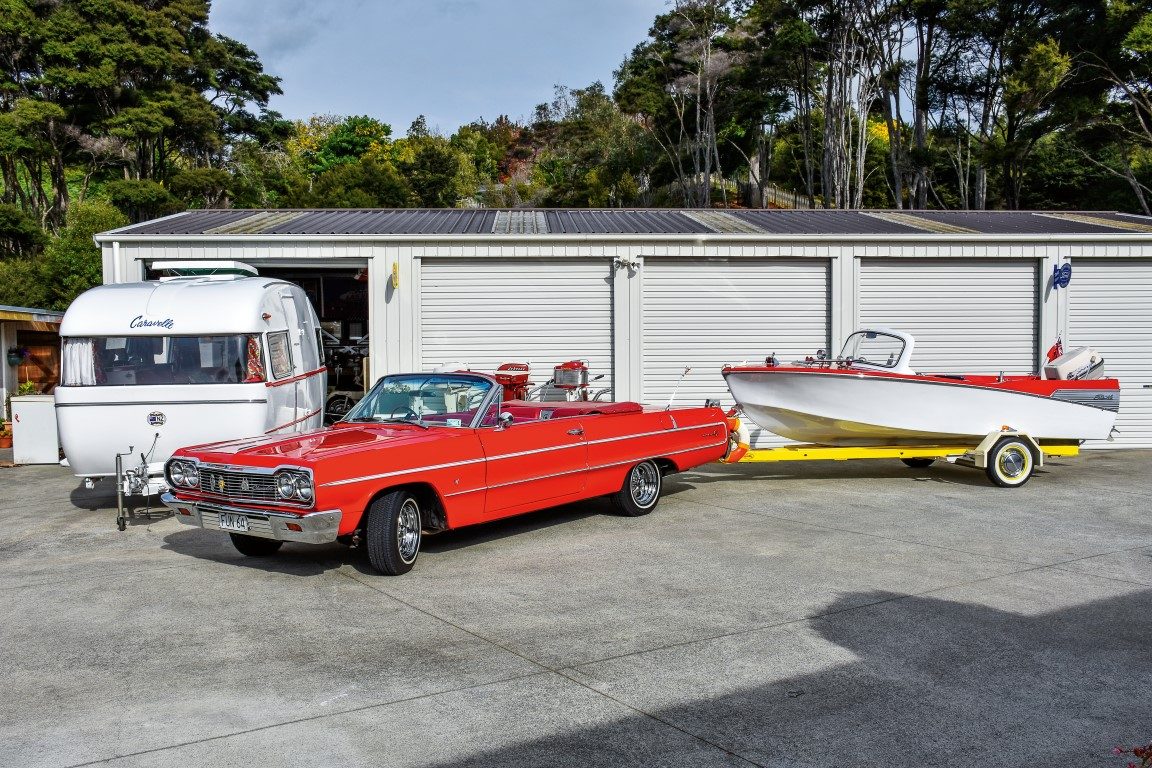
Interestingly, the Caravelle also has a ‘boating’ legacy. As the advertisement below suggests, Caravelles were promoted as ‘air-tight’ (dust-free) caravans thanks to their one-piece moulded fibreglass hulls – so air-tight they could even float!
The Man Cave
Stepping into the five-bay garage (shed) is a bit like stepping back in time. It’s difficult to absorb the sheer diversity and magnitude of Jeff’s collection – arranged neatly (but tightly) around the shed.
Some of the items are easy to examine – like the ‘58 Chevy, the 1930 Ford Model A hot rod and the old Jawa motorcycle. But to really appreciate the collection you need Jeff looking over your shoulder, explaining the provenance and significance of any piece that catches your eye. There are hundreds of intriguing stories.
From a marine perspective, it’s impossible to ignore the remarkable selection of outboard engines – certainly the largest and best I’ve ever seen. And all in pretty good condition. Among the most unusual is a late-50s 7.5hp Evinrude – a four-cylinder (horizontally-opposed) engine. Surely the smallest four-cylinder outboard engine ever built?

Another is Jeff’s personal favourite – a twin-cylinder, German-manufactured Archimedes from a similar period. “It’s in perfect condition,” he says, “and starts with the first pull – every time.” Nearby is a Riptide Sportsman – a brand from the early-60s with a shady genesis. Manufactured in Australia, the Riptide engines looked suspiciously like Mercury rip-offs and the operation was forced to close after Mercury objected.
If nothing else, these engines are a fascinating demonstration of the modern outboard’s humble beginnings and evolution.
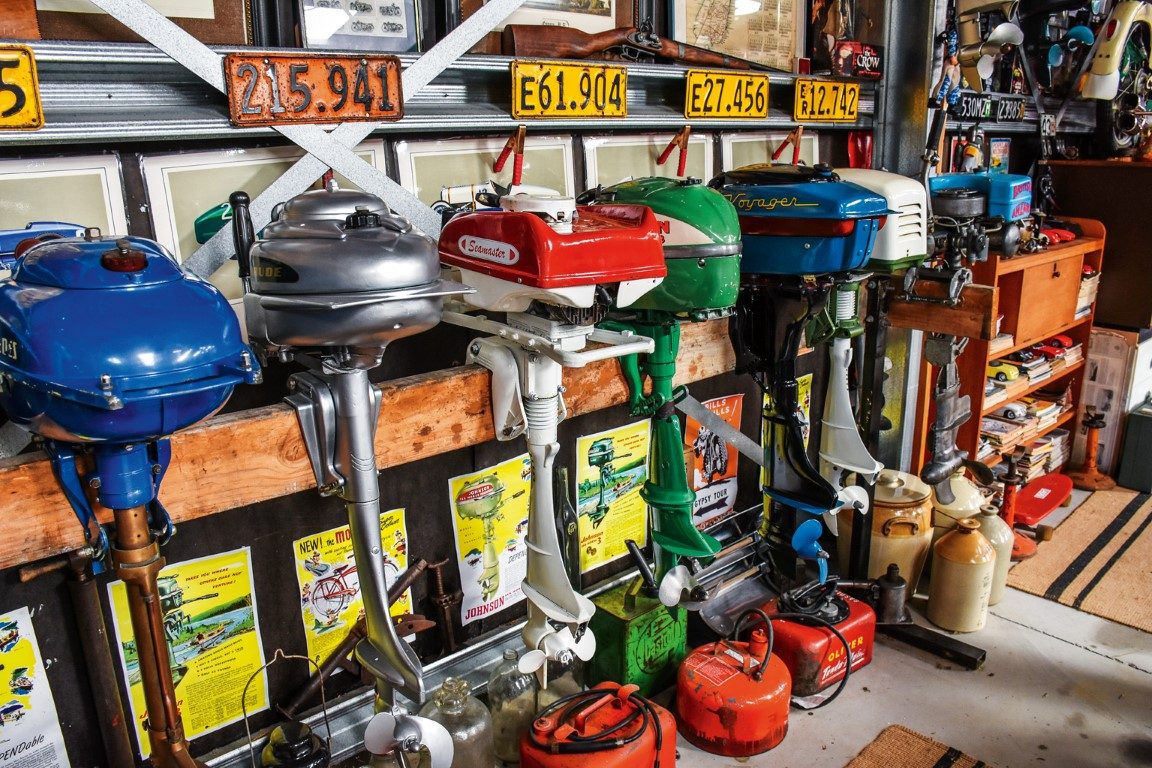
What makes a collector like Jeff tick? What ‘floats his boat’? Why does he – and thousands others like him – collect?
“For me it’s all about the design – which is why my focus is both broad and narrow – it covers cars, boats, motorbikes, caravans and lots more besides, but from a particular period. The 50s and 60s produced iconic designs – across multiple industries – I appreciate the aesthetics.
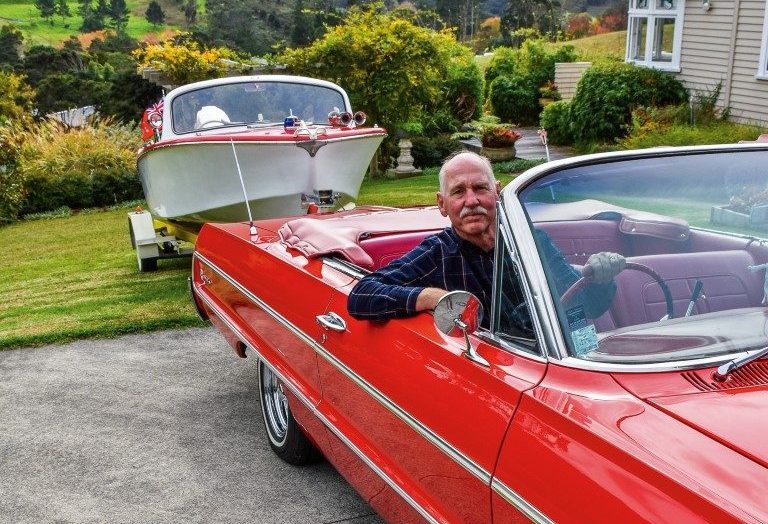
“Designers created things that had ‘character’ – it wasn’t only about the efficiency and functionality. These objects speak of a different time, an era when we had more time to appreciate things rather than simply ‘use’ them. I understand that and like it. Lots of people understand this.
“Anyone who’s interested in caravanning will be aware that there is a massive interest in the retro market – people are today paying silly money for caravans that 50 years ago were being thrown away as junk. I think the boating industry is now going through exactly the same retro revival.
